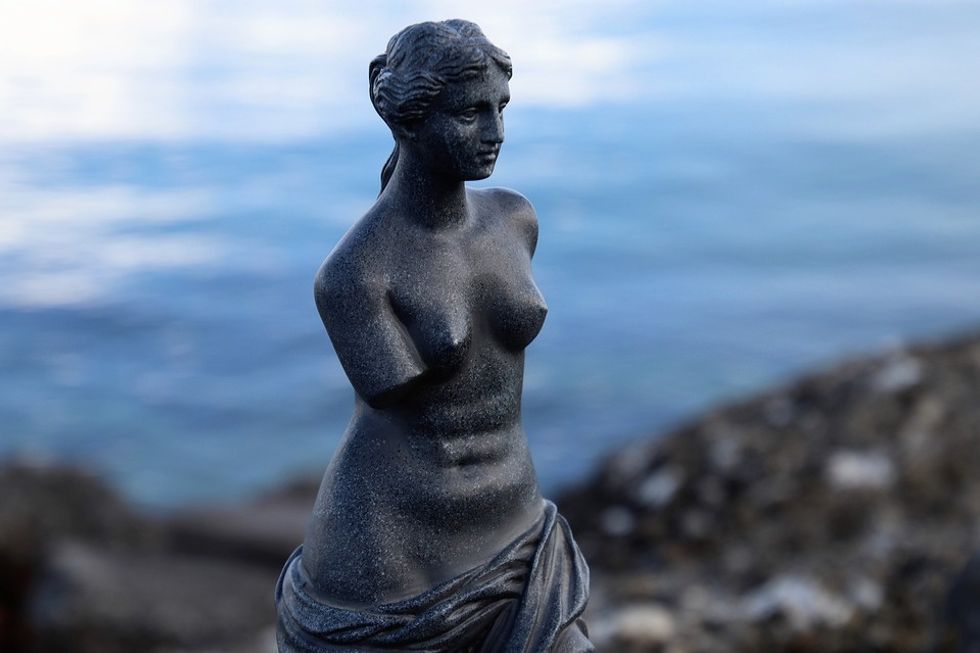It is a marble sculpture depicting a woman. She is slightly larger than life size and is missing her arms. This statue is none other than Venus de Milo.
She is an ancient Greek statue and one of the most famous works of Ancient Greek sculpture. She was originally thought to have been sculpted by Praxiteles but an inscription on the statue's pedestal indicates she was made by Alexandros of Antioch. the sculpture was created sometime between 130 and 100 BC. It is believed to be the depiction of Aphrodite, the Greek goddess of love and beauty. However, some scholars think it is a depiction of the sea-goddess Amphitrite because of the statute's connection to the island Milos. The statue was discovered on the Greek island, Milos, and was given the island upon its discovery.
One of the statue's famous features is it's missing arms. However, the reason for the missing arms is unknown. It could just simply be that they were lost of time. If no one knew where the statue was for hundreds or thousands of years, there is no telling what could have happened. It is amazing that the rest of the statue was still in tack upon its discovery.
Venus de Milo was discovered on April 8, 1820, by a local named Yorgos Kentrotas. He found it inside a buried niche in the ancient city ruins of Milos, which is now the current village of Trypiti. However, there has been some debate over who actually found the statue. Yorgos and his son have been credited while other accounts say it was Yorgos' brother who actually found the statue. Well, whoever discovered it found the statue in two large pieces. One piece was the upper torso while the other was the lower draped legs. Along with these pieces, there were several herms or pillars with heads found along with fragments of the upper left arm and left hand holding an apple, with a pedestal.
The statue is currently on permanent display at the Louvre Museum in Paris, France.

















